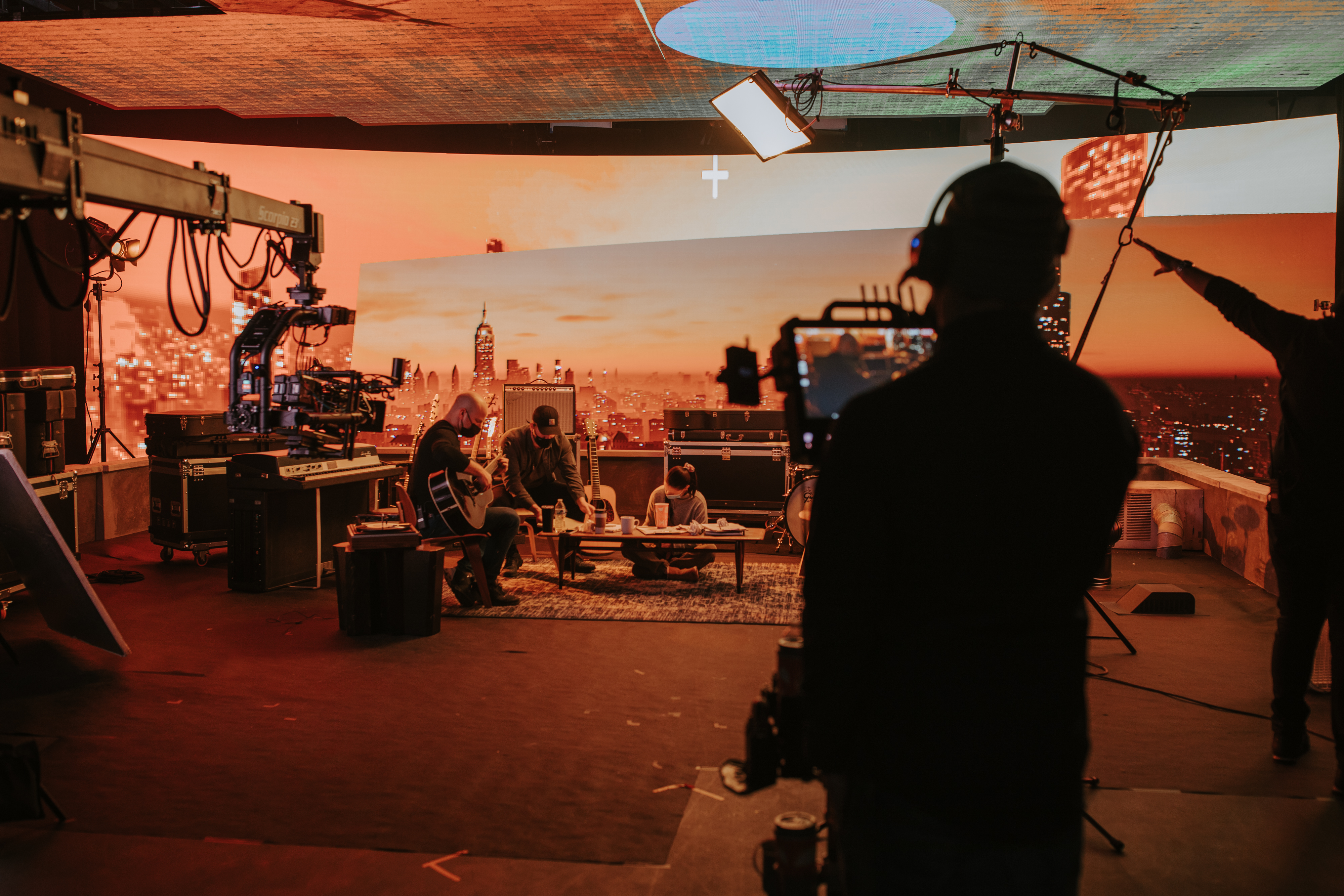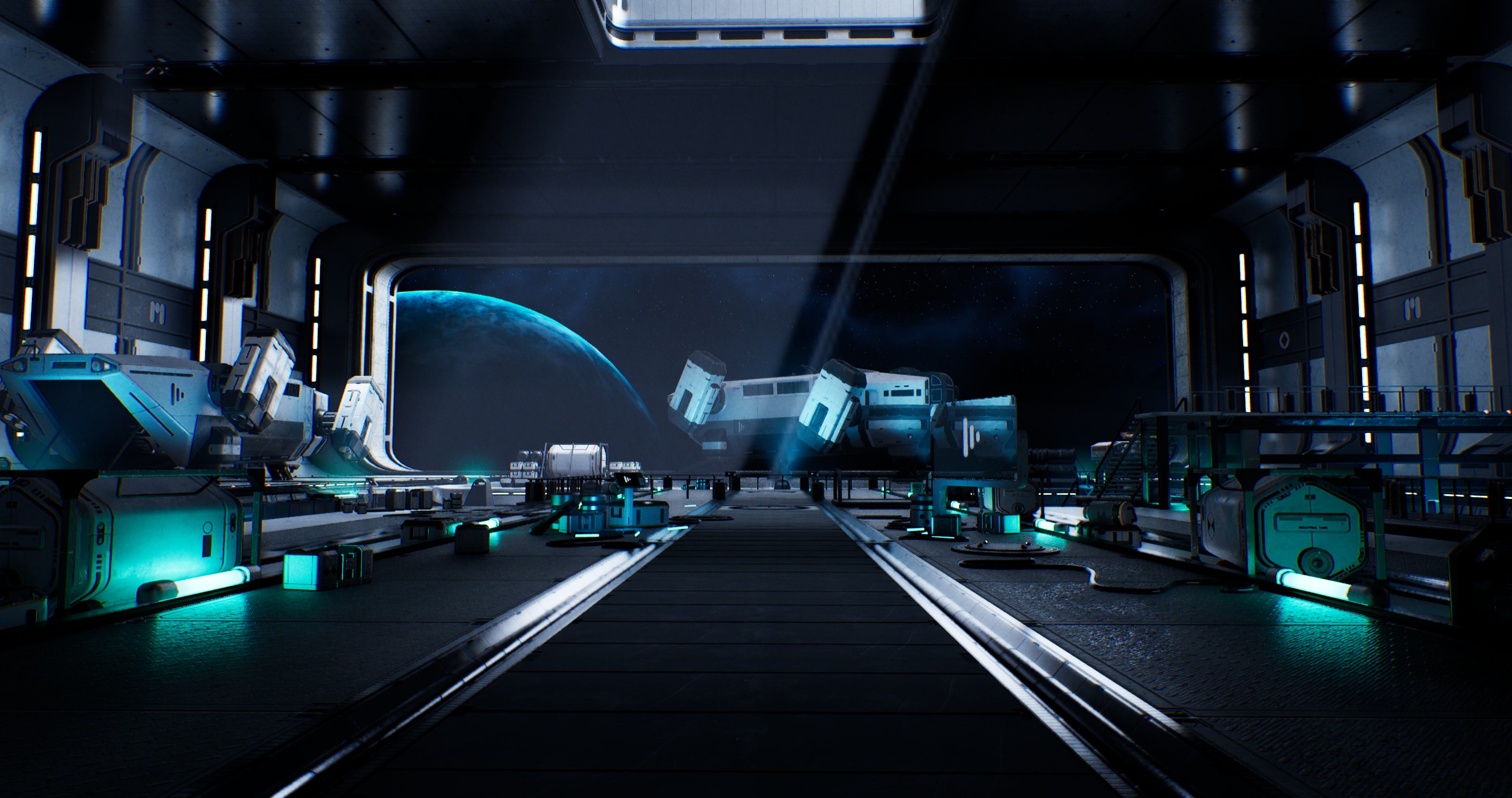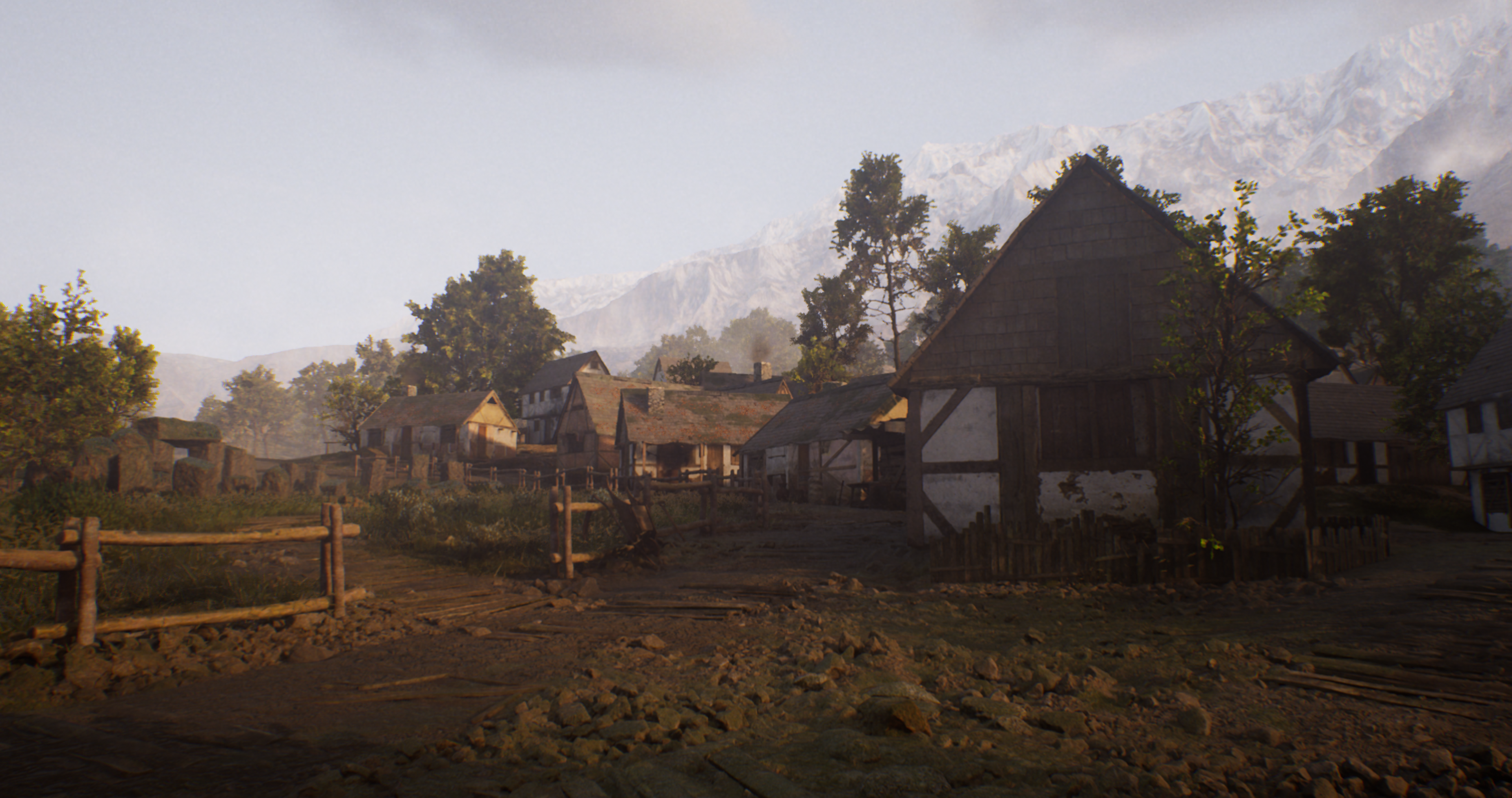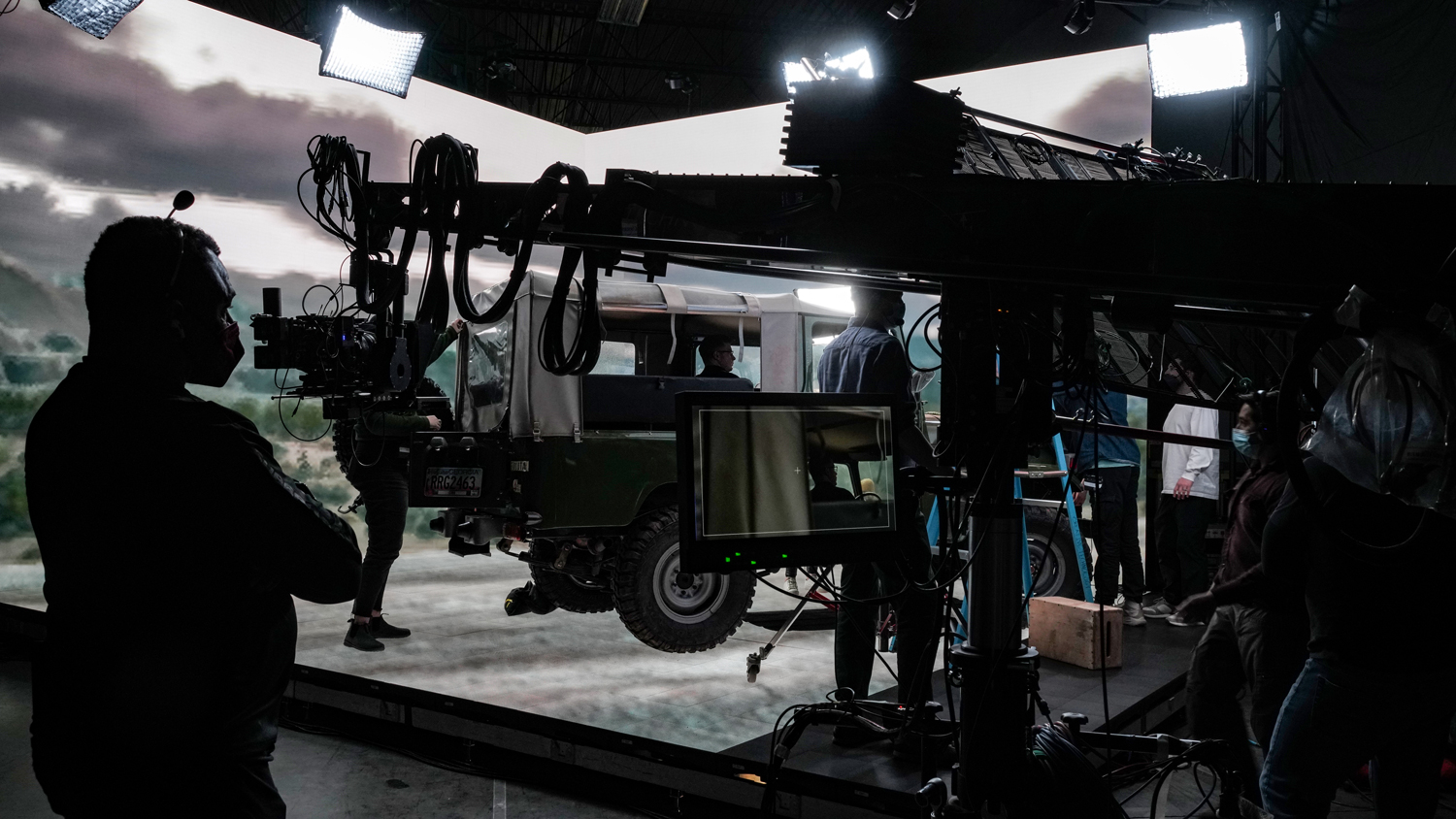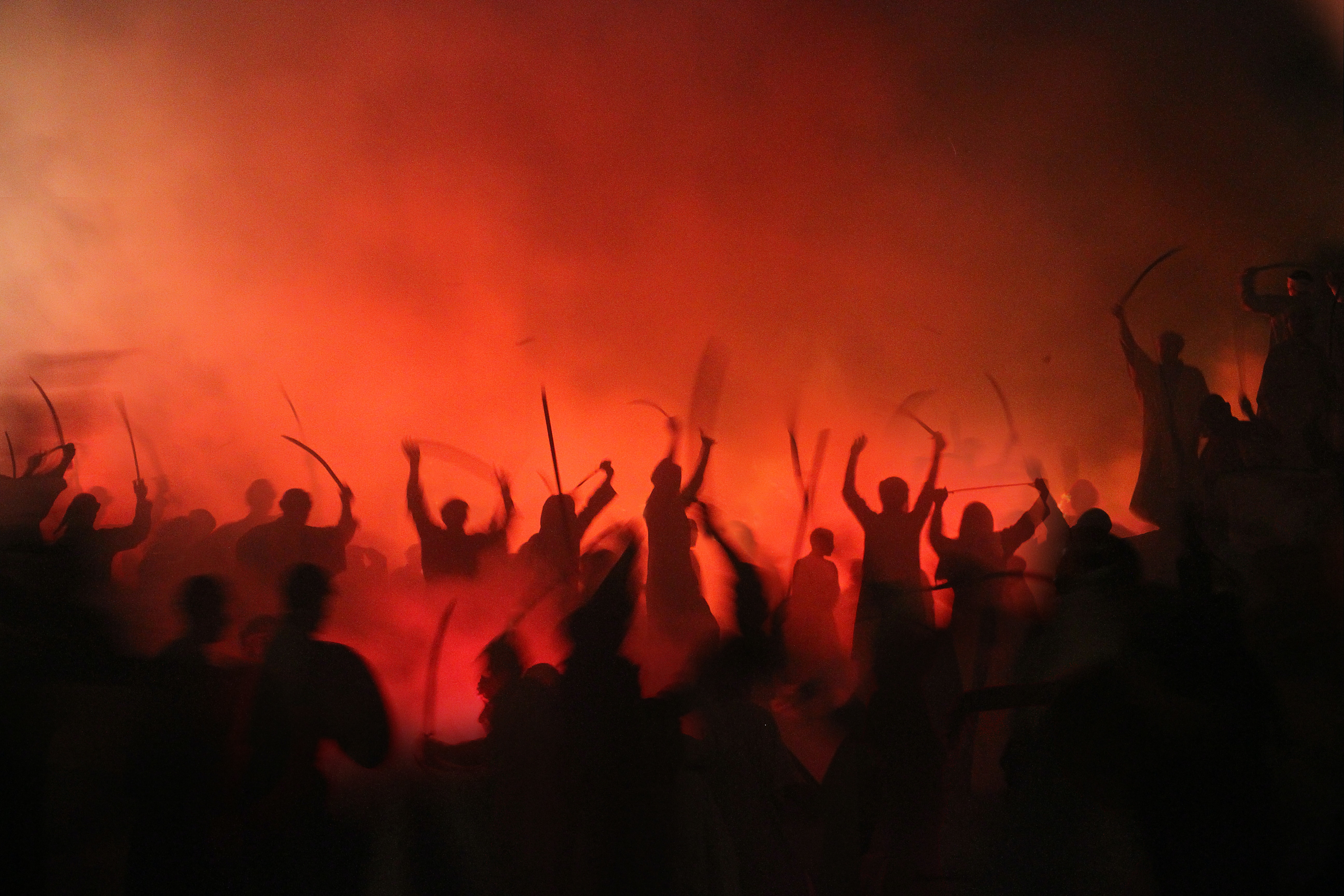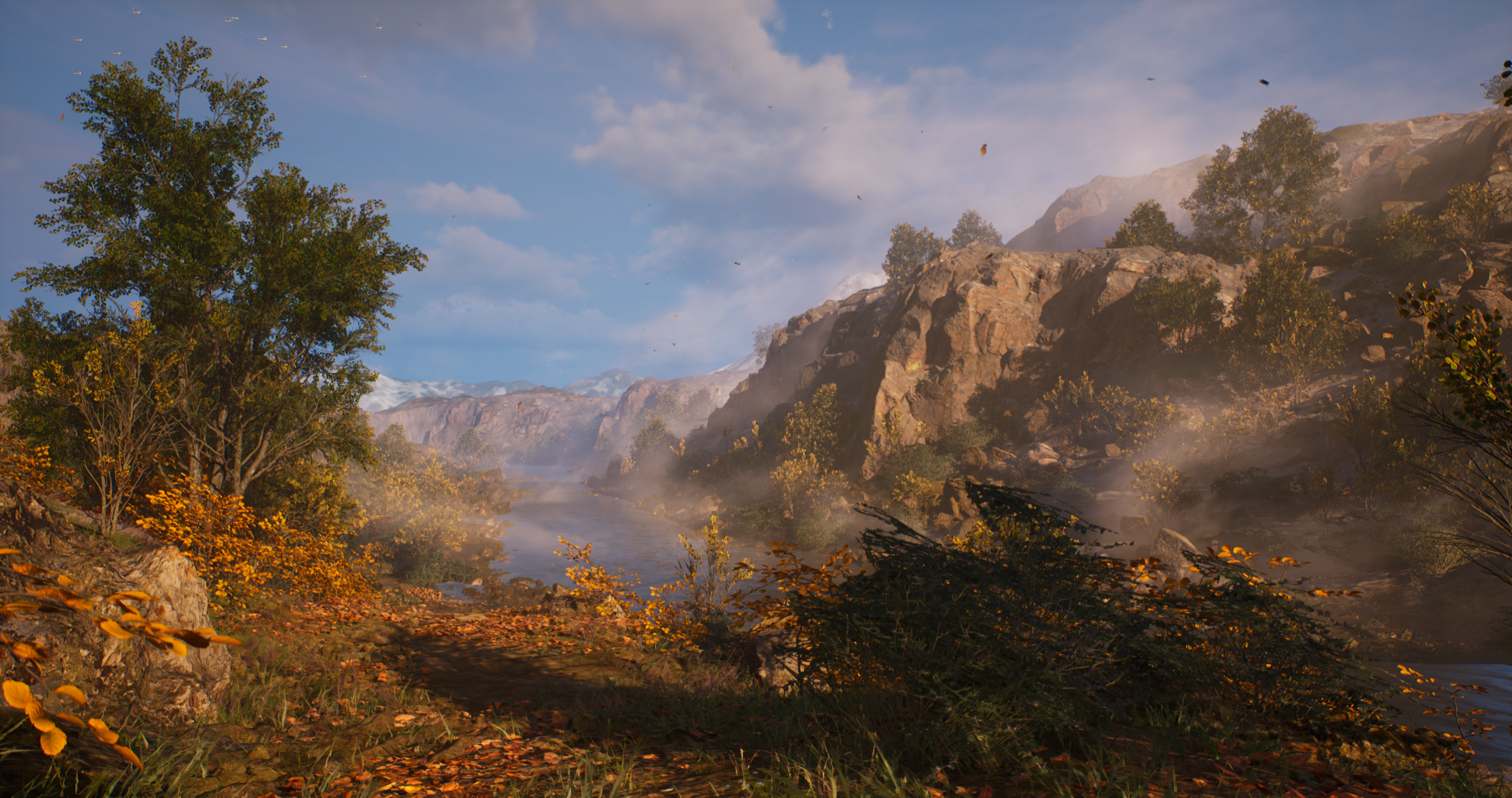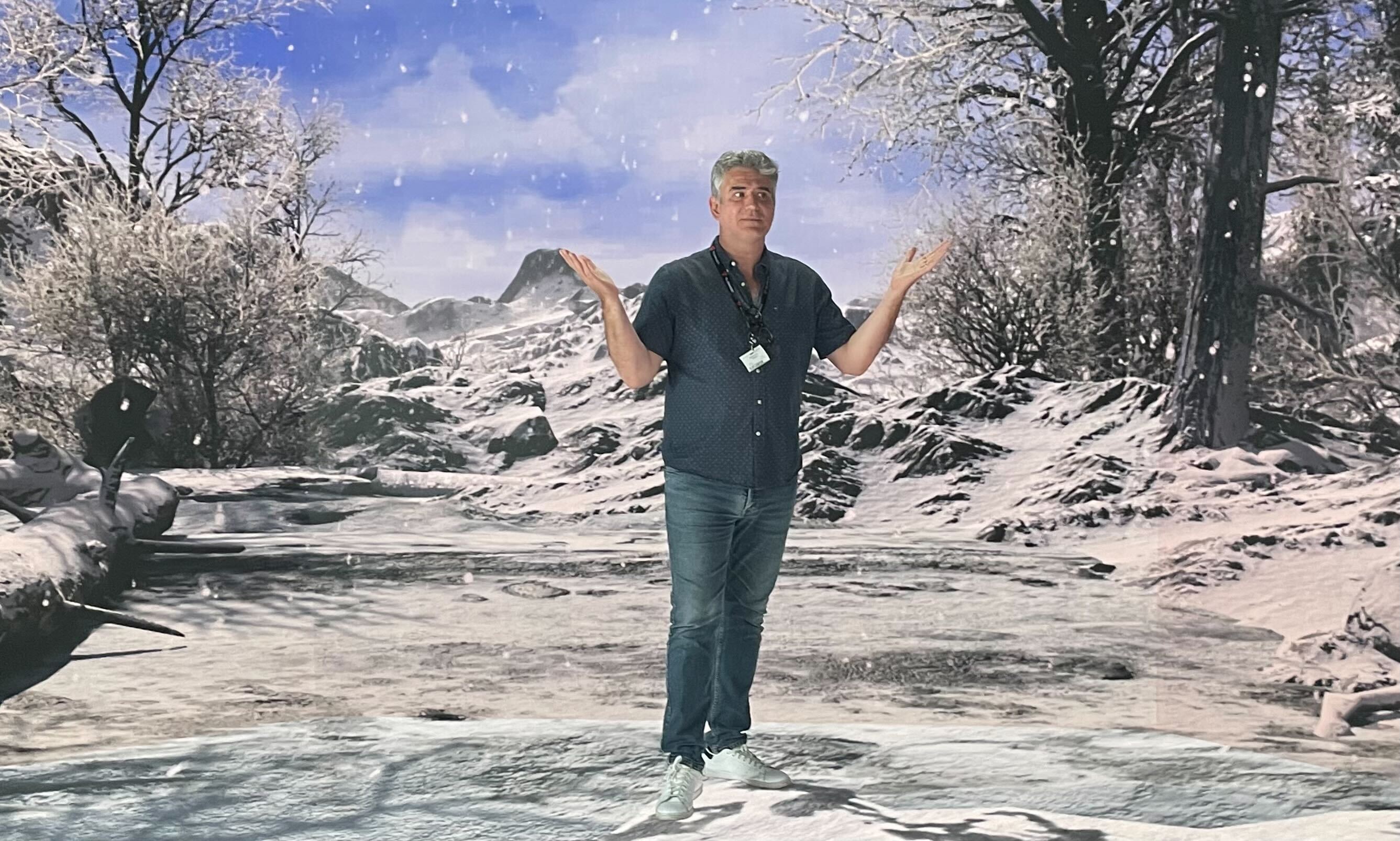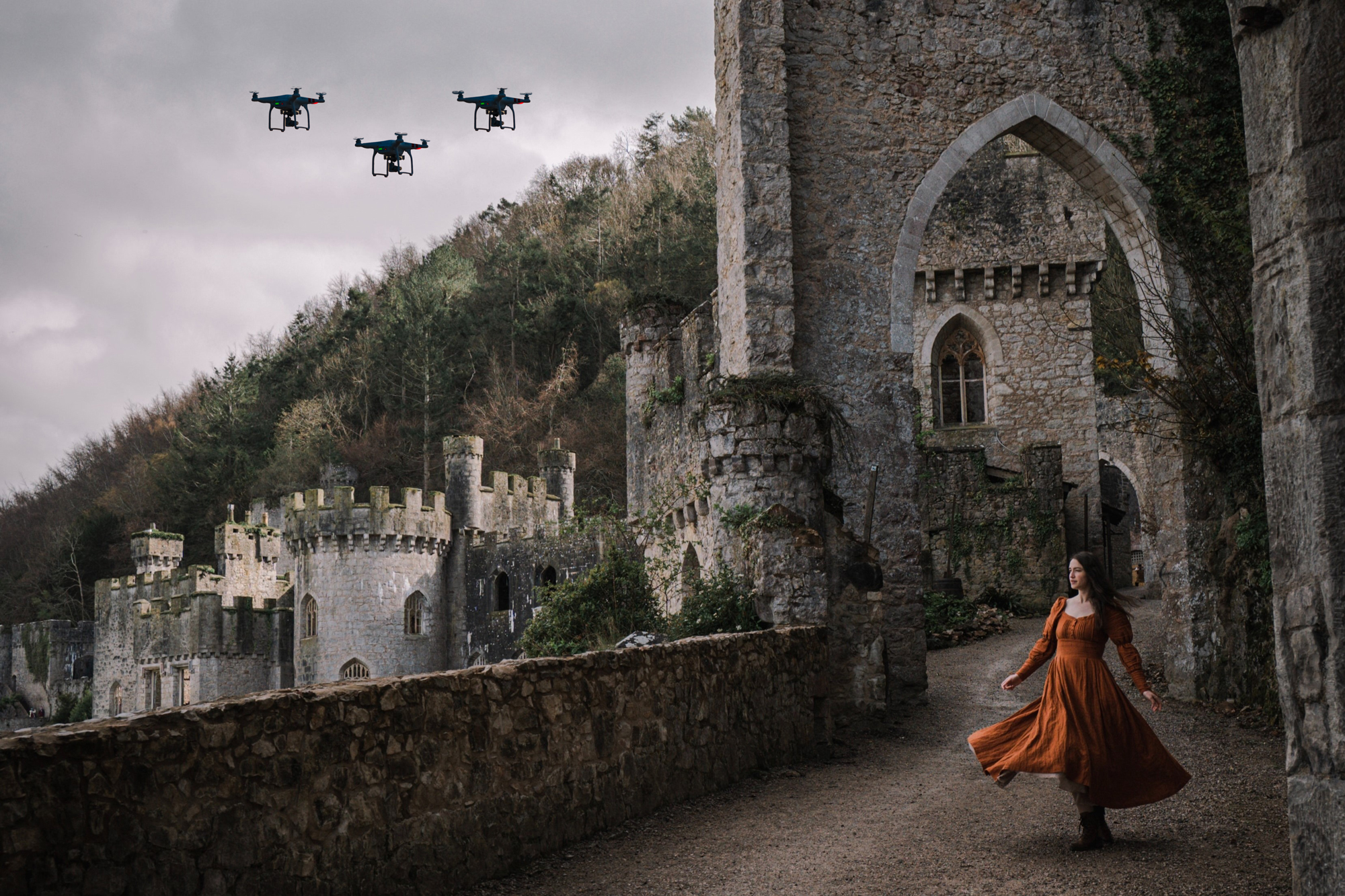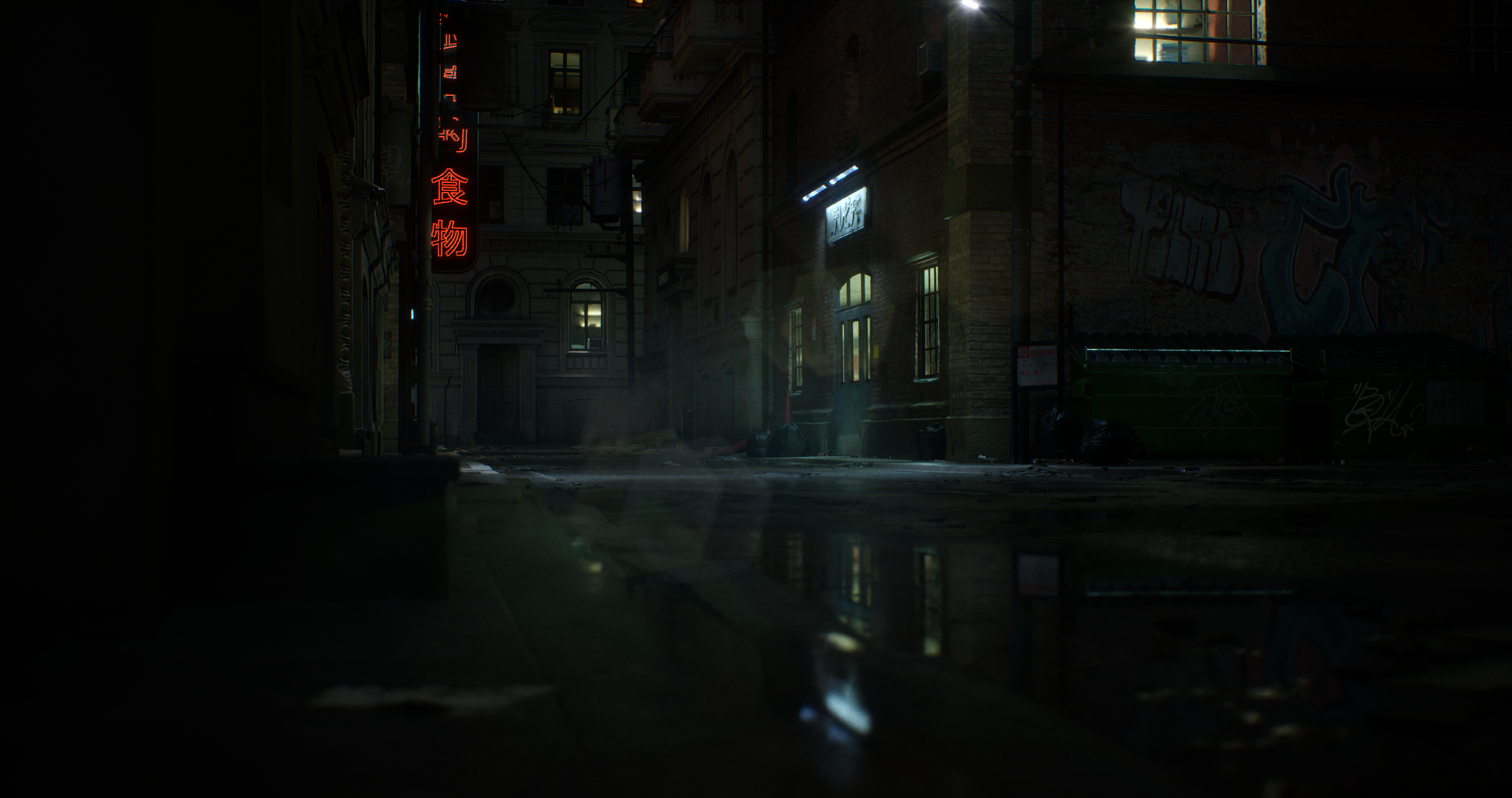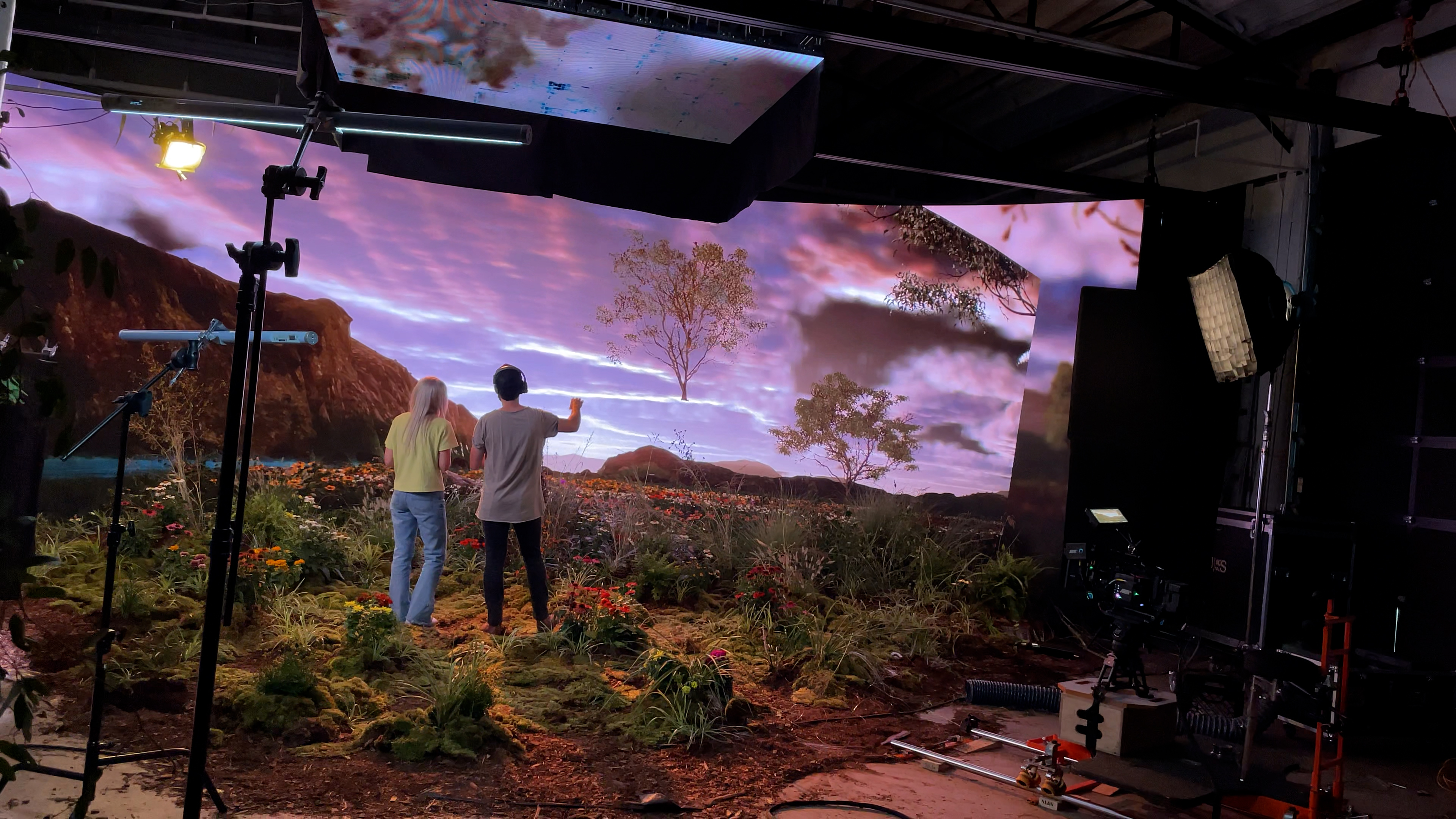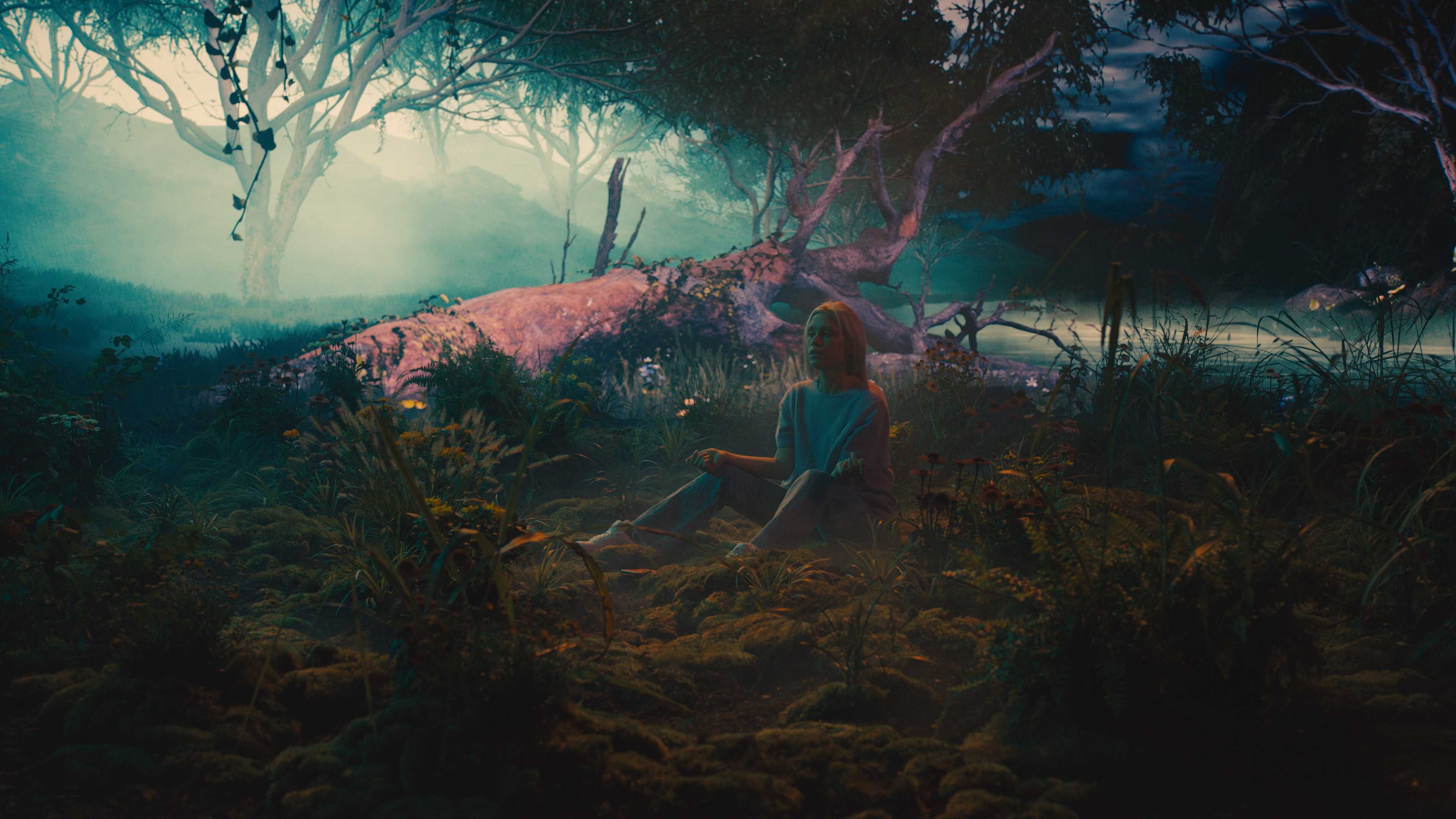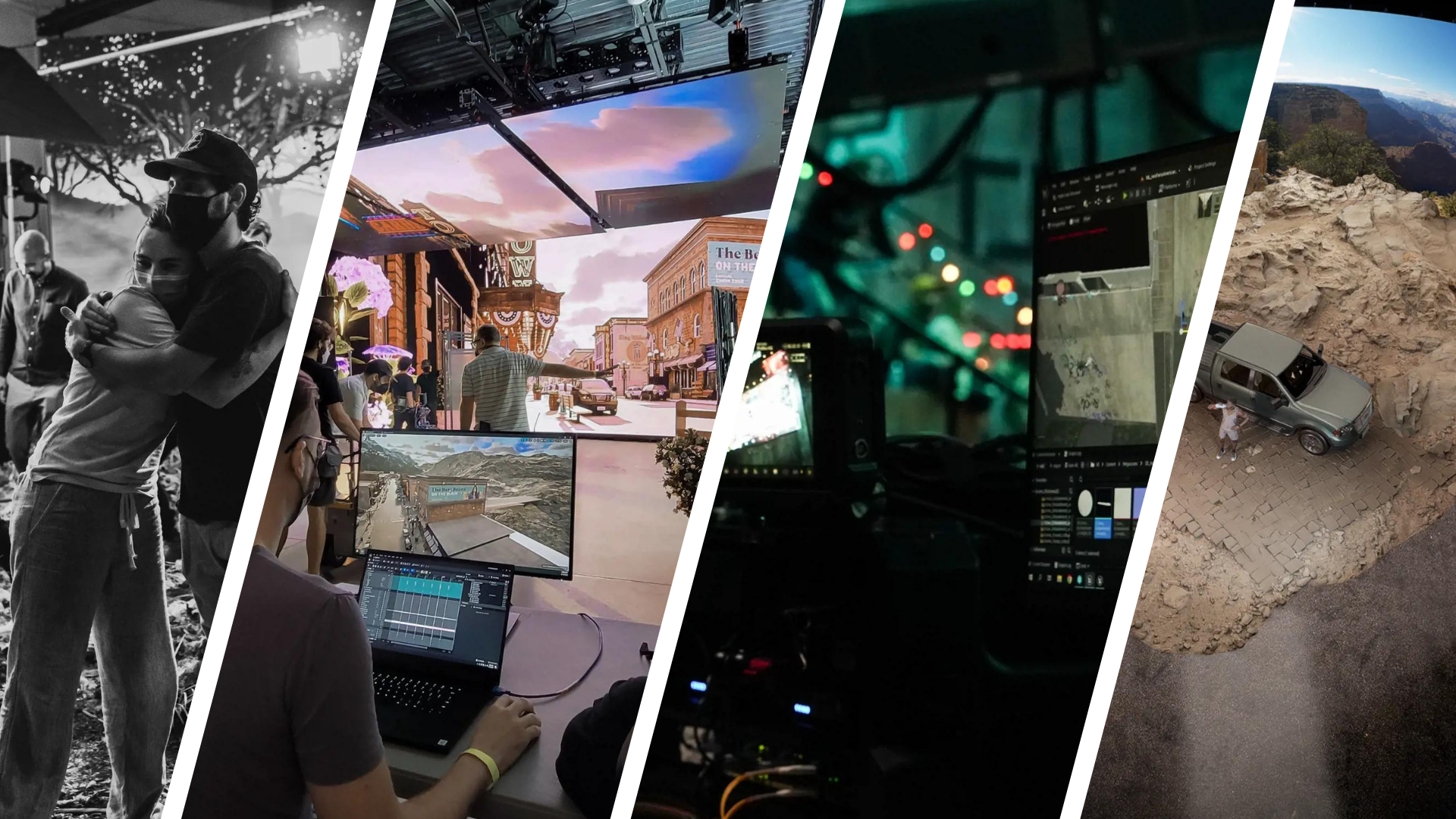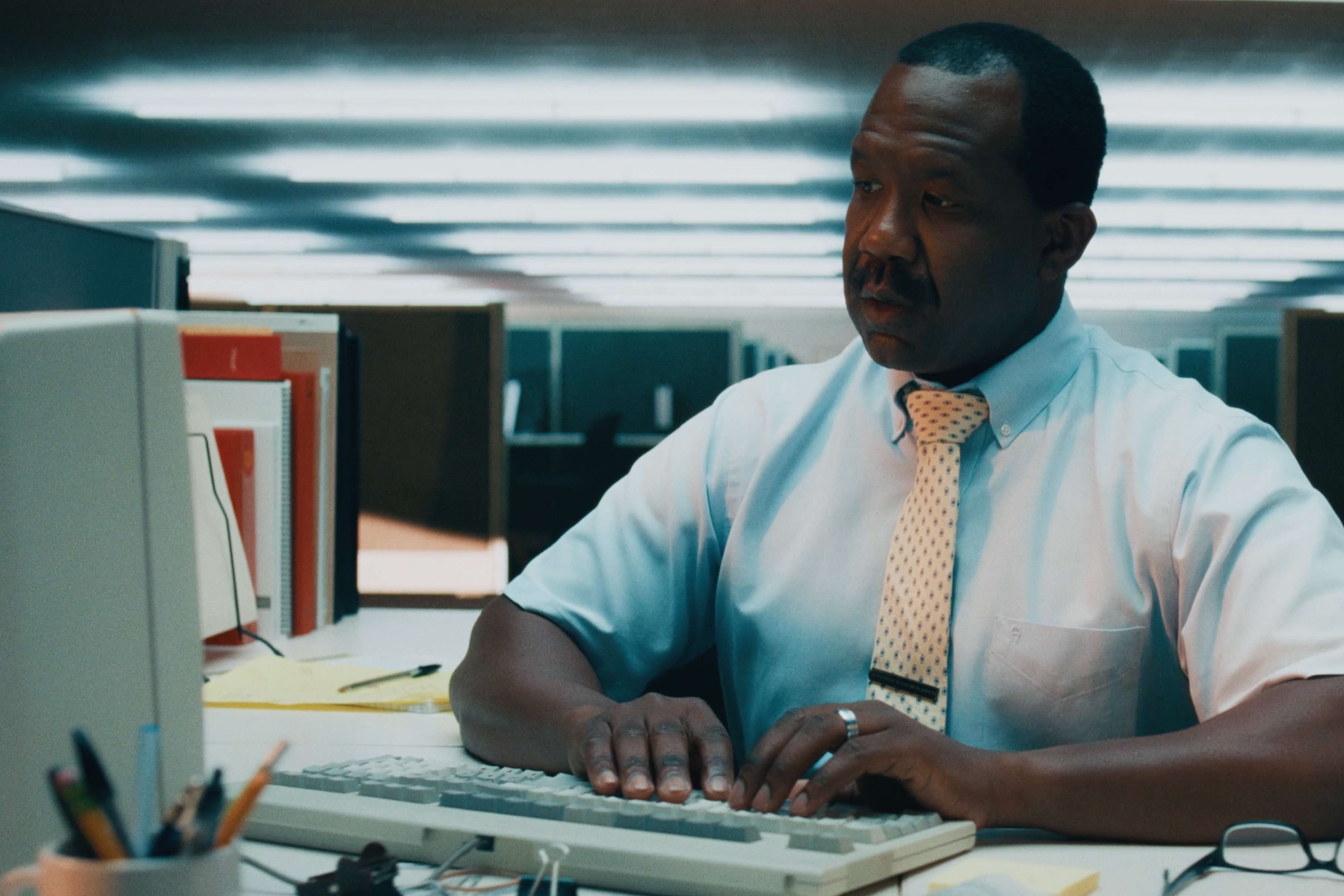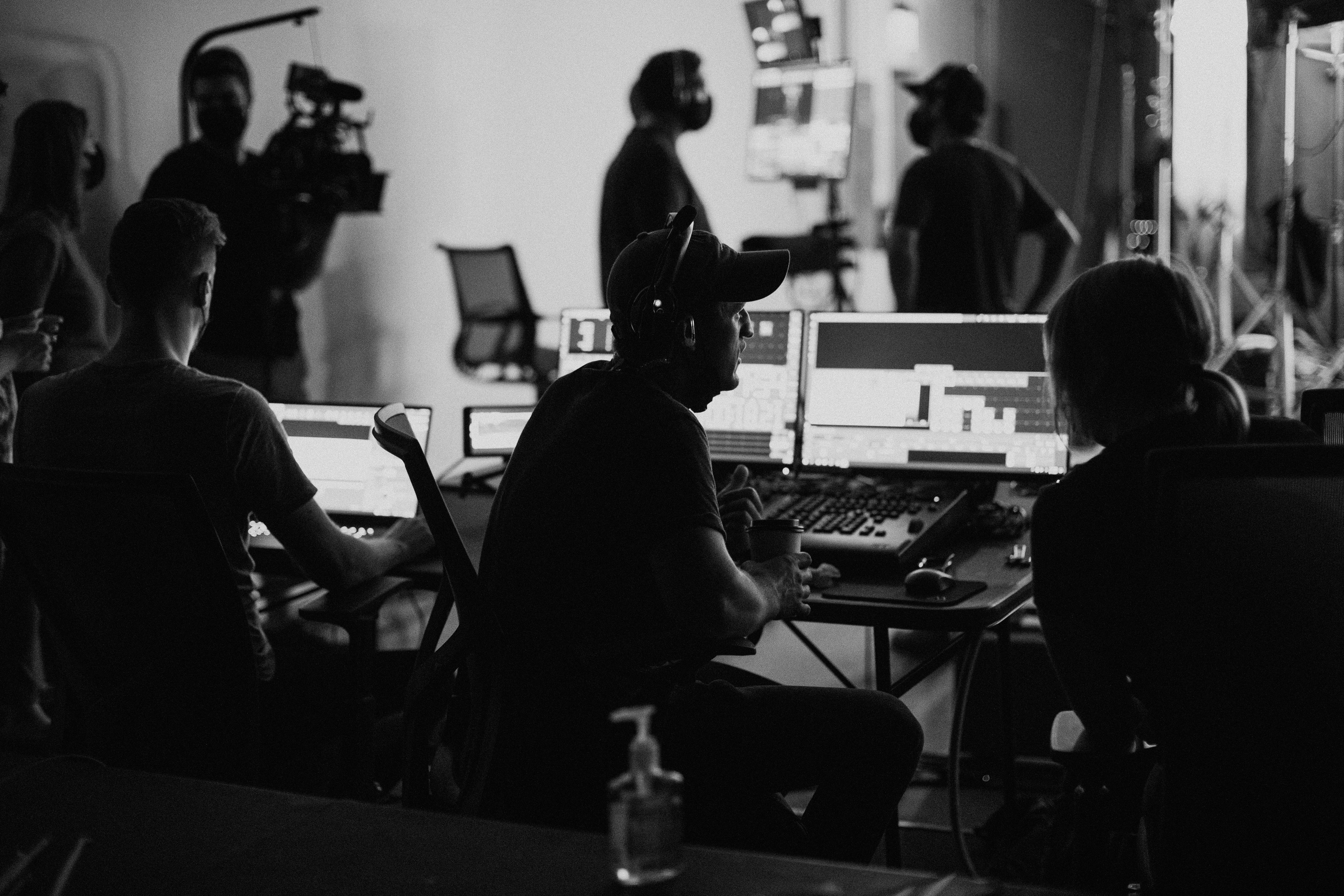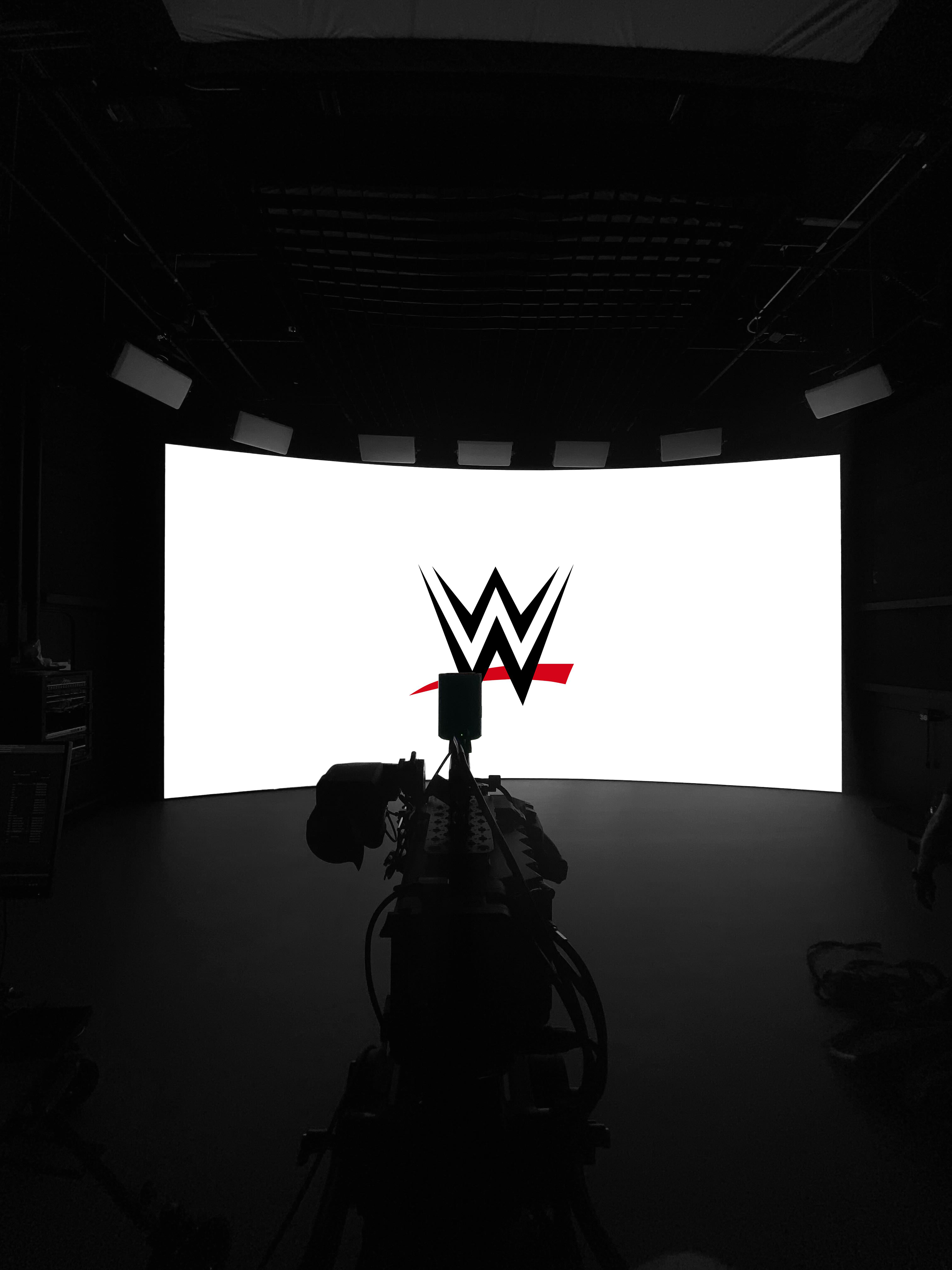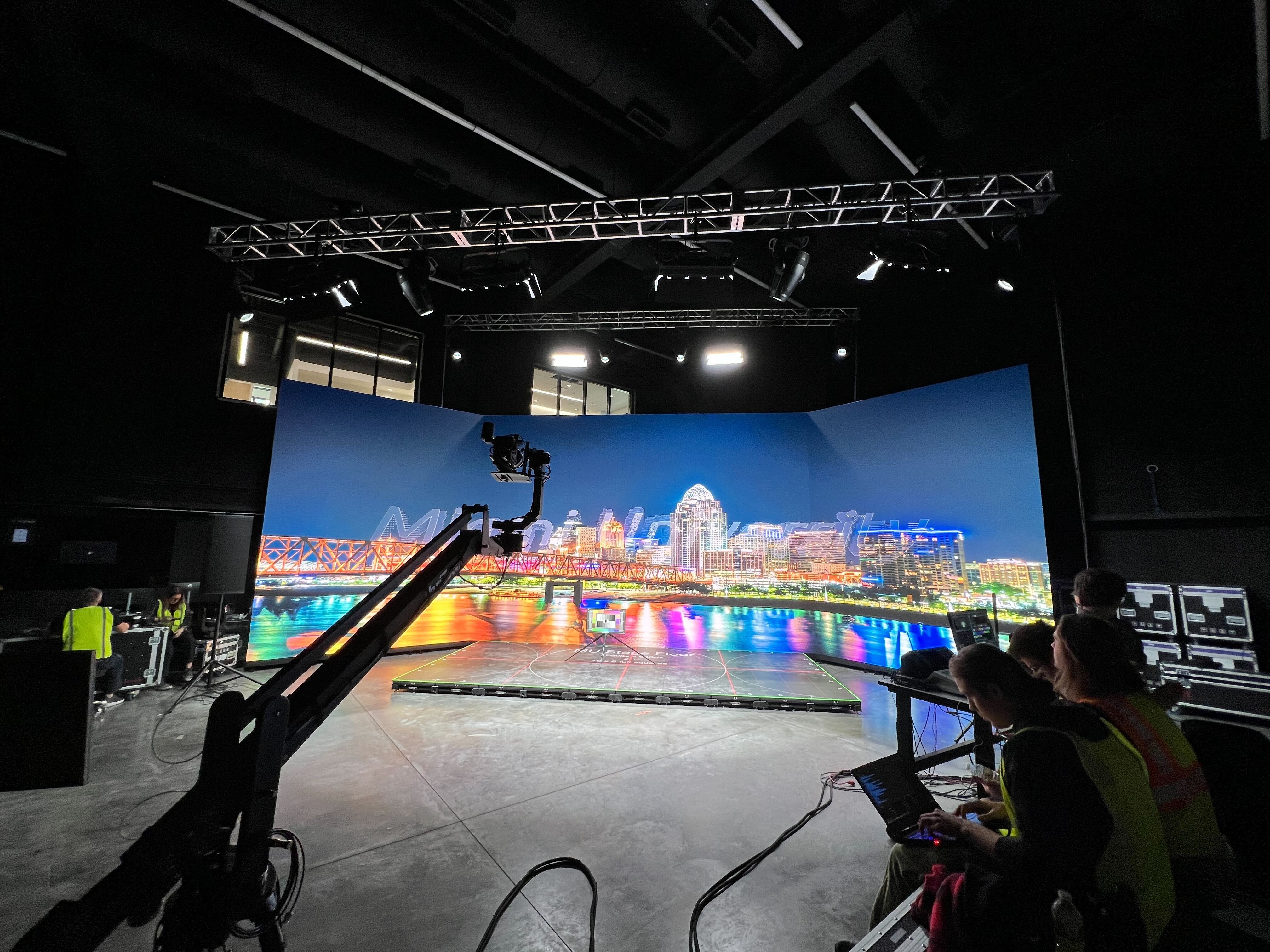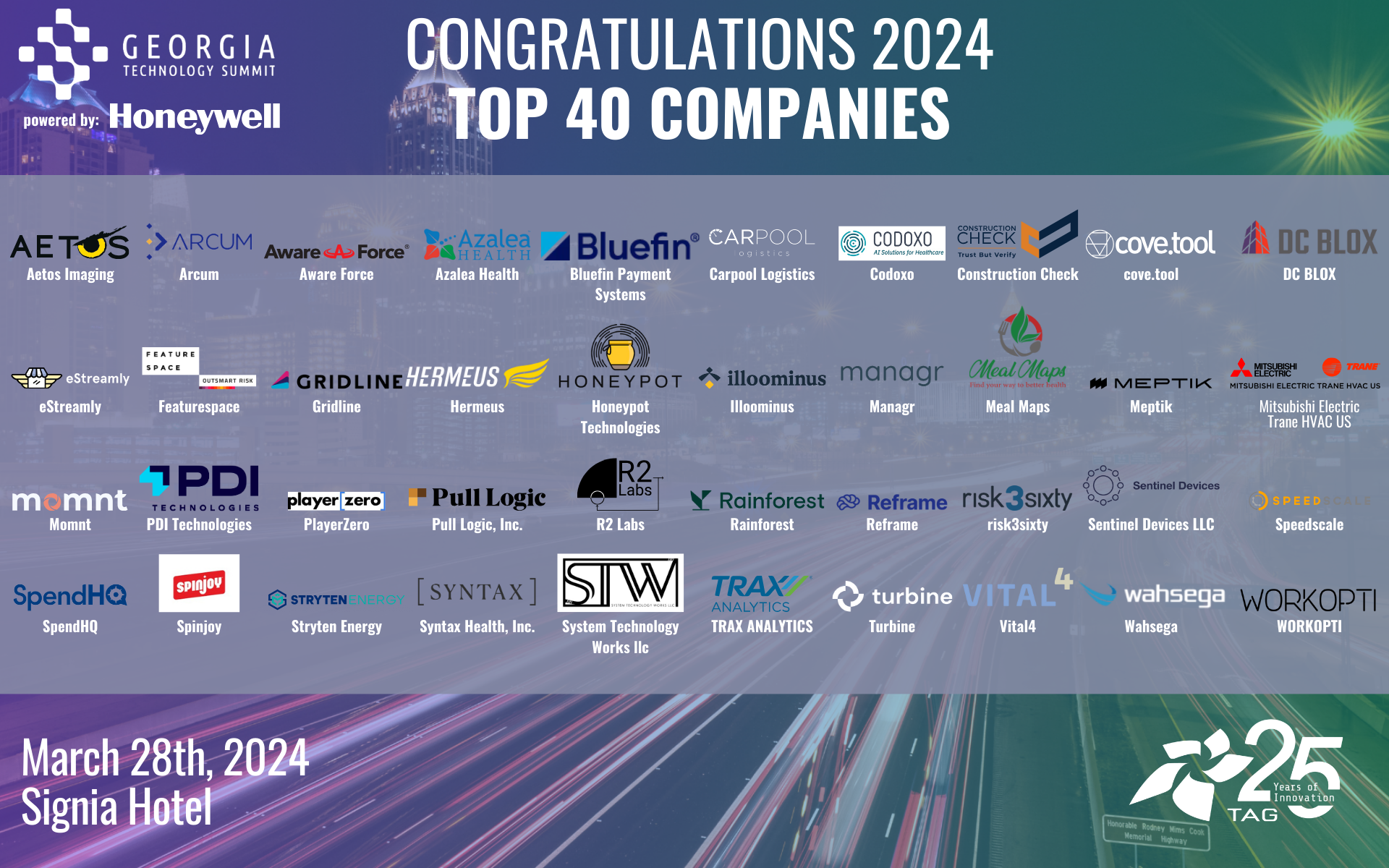Why use virtual production:
With virtual production, filmmakers can create realistic or artistic film settings while reducing the need for physical sets, extensive location scouting, and costly travel expenses.
The pre-visualization phase enables directors and the traditional art department to work with the Virtual Art Department to experiment with different lighting, camera angles, and set designs in real time, making adjustments on the fly to achieve their artistic vision before even stepping foot on set.
On the set itself, using an LED Volume, talent can see and interact with their virtual environment, enhancing performances and providing a realistic setting. Directors are able to essentially see the final shot on the spot, meaning in most cases only minimal adjustments such as color corrections and re-touches are needed in post-production. This not only significantly reduces the time in post, but also allows to address any upcoming changes in real-time, on the spot. Opposite to a green screen workflow, the light spilled onto talent and props using an LED Volume is desirable, adding to the overall look and feel of the scene. Glossy and reflective materials, such as in the shiny exterior of a car, are no longer of concern.
This flexibility also extends to post-production, as virtual production streamlines the integration of visual effects and CGI elements, minimizing the need for extensive post-production work.
Overall, virtual production empowers filmmakers to push boundaries, enhance storytelling, and deliver visually stunning content while increasing efficiency.
